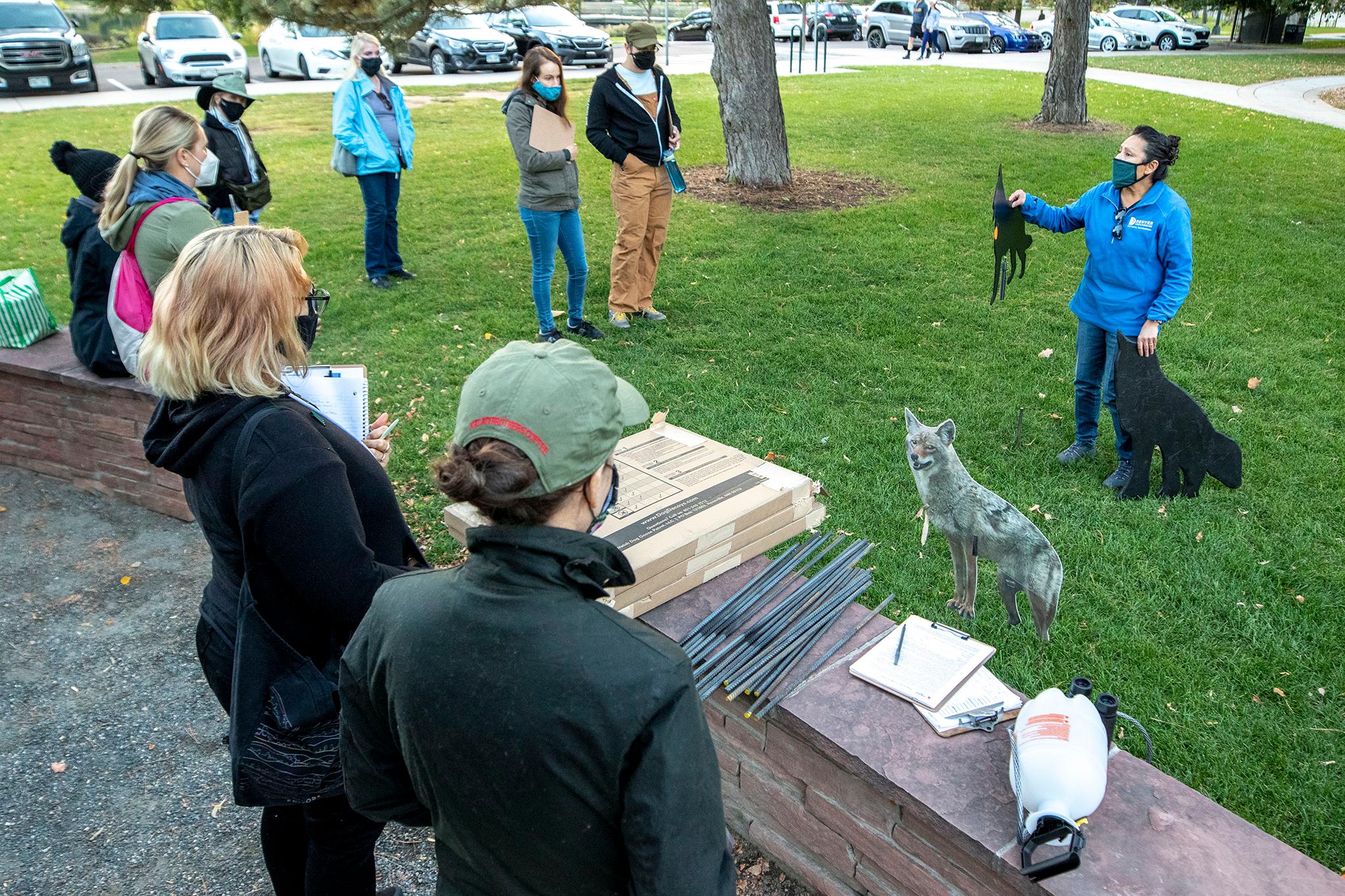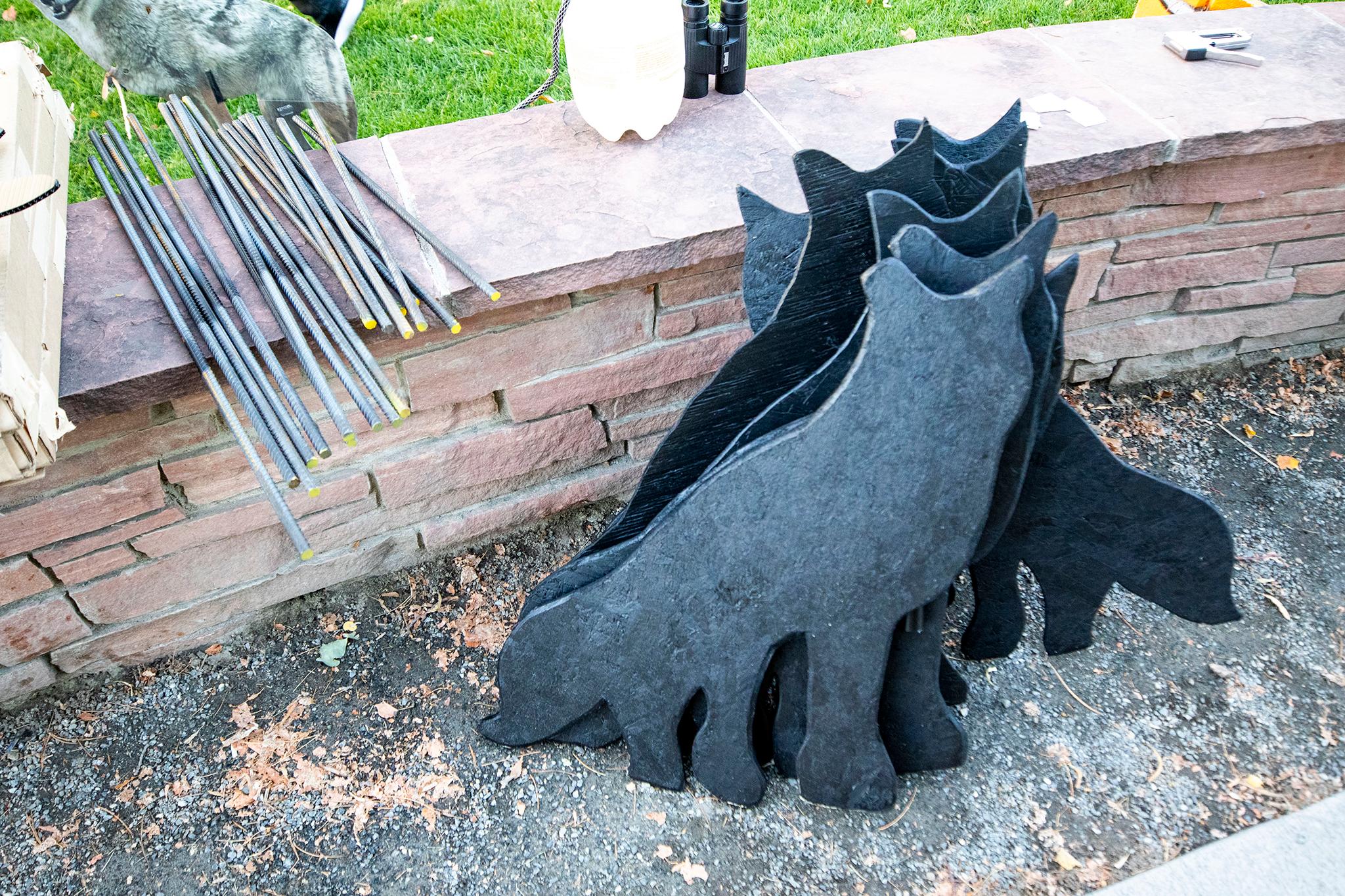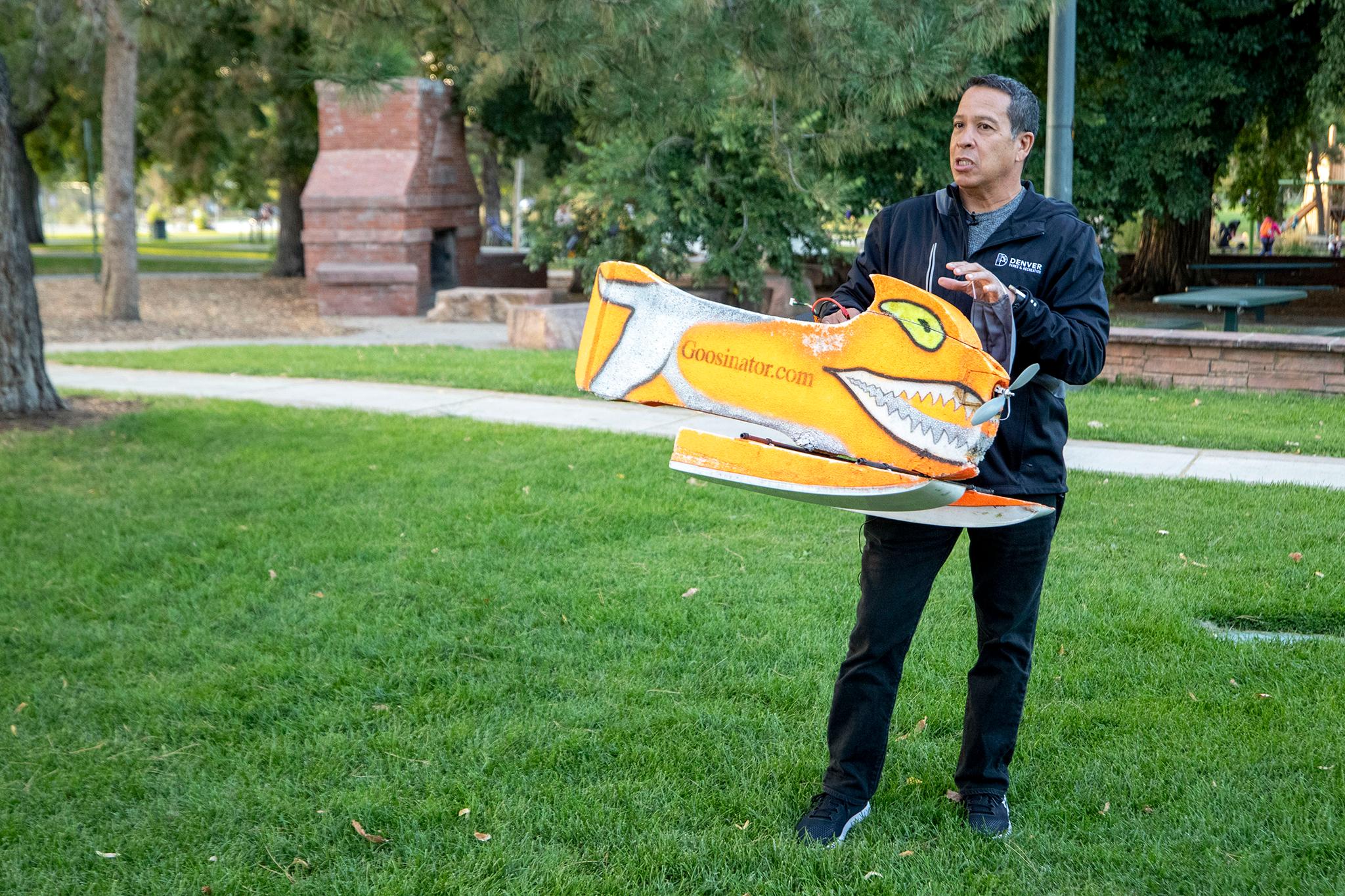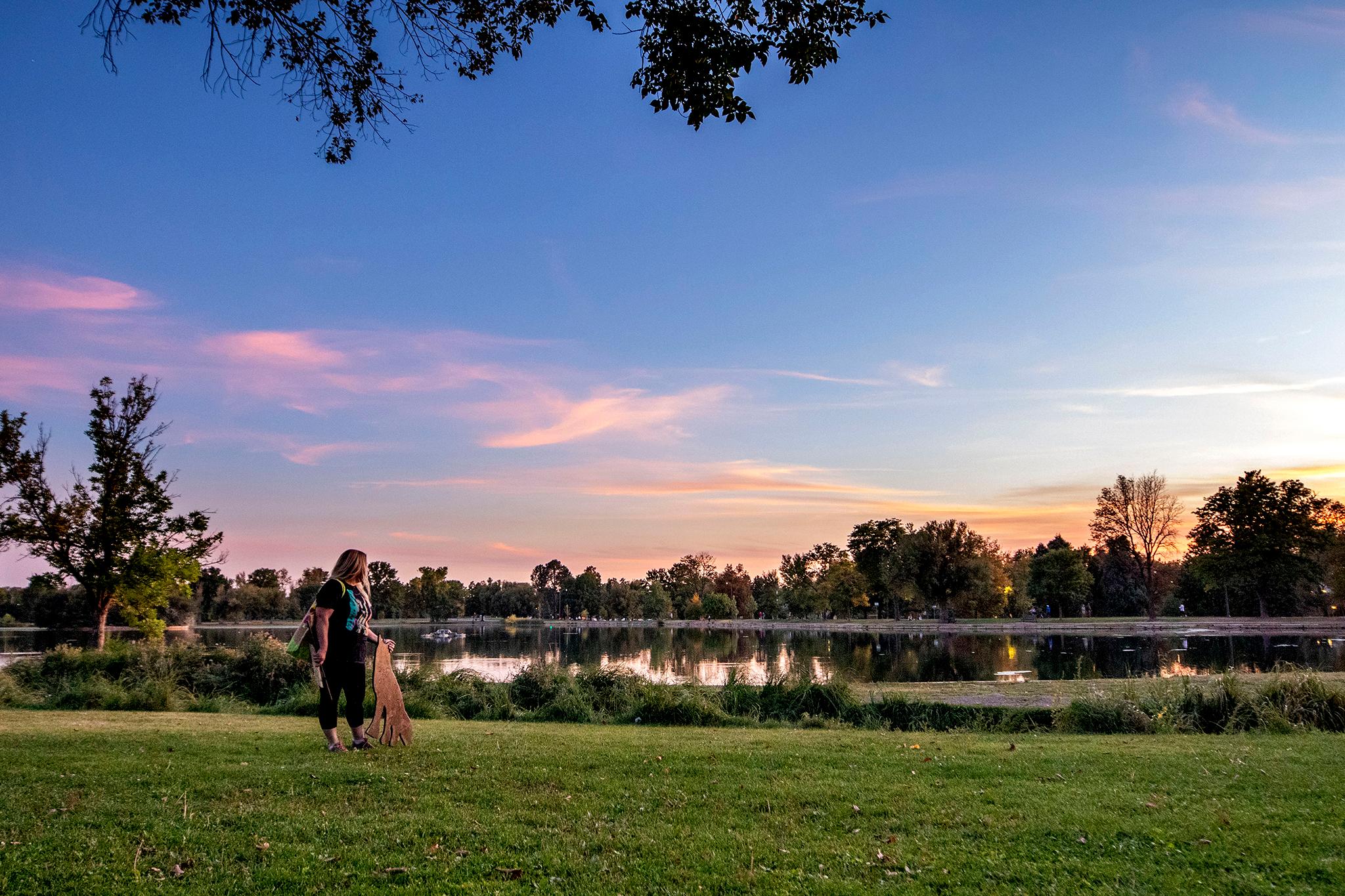When Denver Parks and Recreation's Scott Gilmore began training volunteers to deploy fake coyotes on Monday evening, he made no effort to hide the controversy surrounding how the city has dealt with its goose population problem.
"There are people here who probably did not agree with the culling," he said to the small group assembled at Washington Park. "The hazing and the coyote cutouts and the egg oiling, and all the things we're going to do, will help it make so Denver will hopefully not have to cull geese again. That's our goal."
Let's rewind to July 2019, when residents learned Denver would begin rounding up geese in partnership with the USDA. The problem, Gilmore said at the time, was "resident" geese that arrived in the city during seasonal migrations and felt too comfortable to leave. Accruing poop caused residents to complain.
"There were just too many geese," Gilmore said.
While the city has long had the option to kill geese, he said the department held off until it became clear nonlethal efforts were not making a big impact. Last year, they began culling. Gilmore said Denver is now home to 2,000 fewer resident geese as a result.
This became a hot topic. While plenty of Denverites applauded the city's move, plenty also expressed horror. A movement to save the geese culminated in a petition to fire Gilmore and "STOP THE SLAUGHTER", which pro-goose activist Ellen Kessler and her comrades delivered to Mayor Hancock after his third-term inauguration.
So it was not insignificant that Kessler and others angered by the culling were present Monday night to help Gilmore scare geese away. Officials hope the fake coyotes will help activate a predator responses in migrating geese that will discourage them from sticking around. They're also working to grow large tufts of natural grass that might make geese fear the presence of predators. In the spring, volunteers will help Gilmore's team cover eggs with oil, which keeps them from hatching.

While Kessler doesn't approve of the oiling tactic, she is glad to help Gilmore install and maintain coyote cutouts around the city. If that saves one goose "family," she said, the effort will be worth it.
"We're trying to build bridges with Denver Parks and Rec. There's no sense fighting all the time," she said. "If they're willing to use volunteers to help with the nonlethal options, I'm game."
For people concerned about animal rights, working with the city provides a constructive outlet for their troubled hearts.
Maggie Sanders said she noticed a lot fewer goslings this year. At first, she thought she just didn't notice them. Then she realized what had happened.
"I didn't miss them! They got freakin' murdered! That's so sad," she said.
Both she and her friend, Sarah Hooks, were disturbed by the culling. They wanted to do something, so they jumped at the chance to help when they learned the city needed people to help with the fake coyotes. They are happy to give the city some of their time if it meant they may save some geese from the slaughterhouse.
Time and effort really are the biggest needs for a project like this. Vicki Vargas-Madrid, administrator of Denver's wildlife program, said the coyote cutouts should be moved daily during the upcoming migration season. Visiting geese are expected to arrive in droves come October.


While the presence of real predators, like wolves in Yellowstone National Park, have proven to change behavior in oversized prey populations, Vargas-Madrid said the impacts of coyote cutouts are yet unknown. Volunteers like Sanders are asked to keep tabs of their fake predators, to make observations and report back to the city. This program is a deterrence, but it's also a citizen science project to figure out how effective it may be.
Courtney DeWinter is a public relations professional who's been helping animal advocates get their message out and organize volunteers. She said there are a lot of people like Sanders and Hooks who are interested in making preventative programs work.
"You can't just sit around and complain about what's going on if you don't also show up," she said. "Where I come from, in the Midwest, we call that 'putting your money where your mouth is.'"
Planting fake coyotes is just one piece of this puzzle, DeWinter said. She hopes the animal lovers engaging with this program also show up to help oil eggs in the spring, and that their work helps the city develop a long-term plan to avoid more culling. She also hopes Parks and Rec invests some cash into golf cart and lawnmower parts that could clean up goose poop, which she said may help derail anger toward the birds.
Gilmore said management tools like predator cutouts and the city's remote-controlled Goosinator will become more crucial as time goes on.


"Climate change has made it a lot harder to keep them out of here," he said. "Our lakes don't freeze anymore. The grass stays greener longer. We have a lot of challenges here."
One major challenge for the 2D coyotes, he added, is mischievous humans. Several cutouts have been stolen in the last few weeks since Gilmore and his volunteers began sticking them in parks around town.
"When the public steals the cutouts, it's pretty demoralizing for everyone that's hoping to find a solution," he said.
If you're interested in volunteering with Denver Parks and Recreation, you can visit the department's signup page on its website.












